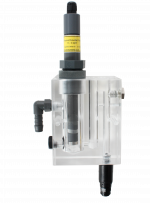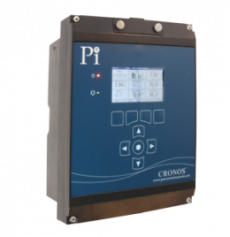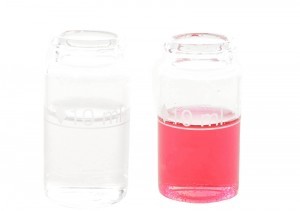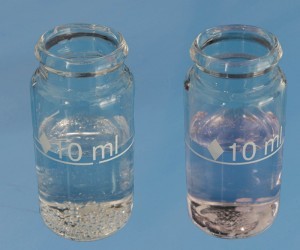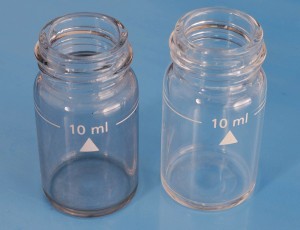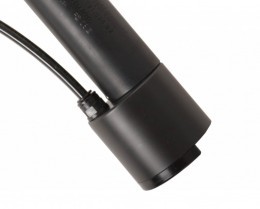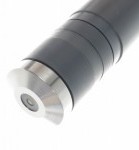
DioSense: “These are the best online chlorine dioxide sensors we’ve ever used and we’ve tested most” – Alistair Cameron, UK
Online, continuous Chlorine Dioxide Analyzers and Controllers make up the DioSense range which utilizes the very latest and best chlorine dioxide sensors available in the world today. The DioSense chlorine dioxide sensors are membraned devices which are insensitive to chlorine, use no reagents, are extremely stable, and have reduced maintenance and reduced whole life costs.
The DioSense chlorine dioxide sensors which give a dissolved chlorine dioxide measurement in ppm or mg/l and their associated flow cells are available with different chlorine dioxide controllers giving you the same great performance with different communication, display, and control options.
The DioSense Residual Chlorine Dioxide Monitor is used in many applications requiring chlorine dioxide analyzers simply for chlorine dioxide monitoring or residual chlorine dioxide dosing control.
Pi’s chlorine dioxide analyzers are designed to have reduced maintenance, reduced calibration and reduced spares requirements. The DioSense ClO2 analyzers are undeniably the most cost effective ClO2 analyzers available.
According to the EU Directive 98/83/EC, the operators of waterworks must ensure that the levels of harmful chlorite (ClO2–) in drinking water remain below the specified limit of 0.2 mg/l. The monitoring of chlorite at the same time as chlorine dioxide is also a European requirement.
Pi is able to provide both chlorine dioxide and chlorite sensors which can be controlled from a single chlorine dioxide analyzer. In most situations the ClO2 analyzer will be able to control the dosing of ClO2 by adjusting flow rates, pump rates, or valve positions automatically to maintain the residual chlorine dioxide set-point. Automatic dosing can significantly reduce reagent costs, and increase the level of control over harmful chlorite levels using the DioSense chlorine dioxide analyzers.
Chlorine dioxide monitors are often used to monitor the residual ClO2 in difficult ‘dirty’ applications such as in hospitals or the food industry. In these cases, in order to maintain an appropriate chlorine dioxide residual it is necessary to automatically clean the sensor using the Autoflush.
If you think your application could need the Autoflush, please contact us and discuss it with our experienced technical sales people.
The membraned amperometric chlorine dioxide sensor is a two electrode sensor which operates at an elevated applied potential which in turn eliminates zero drift. Its unique design means that no reagents or buffers are required at all and calibration is a simple one point (no zero required) operation.
In addition to the state of the art amperometric chlorine dioxide sensors, the DioSense range of chlorine dioxide controllers has all the functionality that you need. Choose from the CRONOS® or CRIUS® controller to give you the highest quality chlorine dioxide monitor, with all the functionality you need, at the lowest price possible. Its modular design means that you pay for everything that you need, and nothing you don’t, without sacrificing the quality of measurement.
The DioSense chlorine dioxide analyzer is used in many applications from hospital water treatment to agricultural produce washing often as part of a chlorine dioxide dosing control regime. Capabilities including remote access via the mobile phone network and full ClO2 dosing control, marking the DioSense as the chlorine dioxide analyzers of choice for many ClO2 suppliers.
- Amperometric sensors – continuous online chlorine dioxide ppm measurement
- No chemical reagents – lower cost of ownership
- Stable and reliable – excellent process control
- Suitable for all potable and process waters
- Up to 6 months between maintenance
- No interference from residual chlorine
- Tolerant of water containing detergents
The DioSense chlorine dioxide measurement sensors and flow cells are available with different controllers giving you the same great performance with different communication, display, and chlorine dioxide dosing control options.
The two controllers offer different options but both offer the same great user interface and Pi’s great quality.
- Chlorine Dioxide Dosing Control
- Remote Sites – remote access available
- Cooling Towers
- Food Preparation
- Hospitals
- Food & Drink Industry
- Paper Mills
Anywhere you have a requirement to measure and/or control residual ClO2 is a suitable application for the DioSense. The DioSense chlorine dioxide monitor range is particularly suited to working in sites where reliability and ease of use are most important.
Why not click here and ask for a demonstration of all that our chlorine dioxide analyzers can do for you?
Get more info on the Chlorine Dioxide Sensor
Please contact us by using the form below.
| Document | Type | Size |
|---|---|---|
DioSense |
Brochure | 569kB |
CRONOS® |
Brochure | 582kB |
CRIUS® |
Brochure | 584kB |
CRIUS® Remote Communications |
Brochure | 573kB |
CRONOS® and CRIUS® Control Options |
Technical Note | 534kB |
Remote Access GPRS |
Technical Note | 481kB |
Autoflush |
Brochure | 434kB |
Probe Fouling |
Technical Note | 382kB |
- chlorine dioxide is created on site, eliminating the need to store the chlorine and/or the transportation.
- chlorine dioxide functions through an oxidative reaction rather than chlorinating reaction eliminating the development of chlorinated organic compounds which are believed to increase the risk of cancer. These are called THMs (Trihalomethanes) or DBPs (Disinfection Bi-Products).
A chlorine dioxide controller is a chlorine dioxide monitor or analyzer that has on board control functionality. The Pi DioSense monitors all have such on board functionality so for a Pi DioSense there is effectively no difference between a chlorine dioxide controller, analyzer and monitor.
Focus Ons are a series of short articles distributed by email providing technical information regarding instrumentation, process measurement in potable, waste, process and pool waters. If you would like to join the mailing list, please contact us.
You probably know that most chlorine, ozone and chlorine dioxide analyzers are calibrated using hand held DPD kits but…
… did you know that DPD can’t tell you when you have no residual?
… did you know that errors on DPD performance can be up to ± 100%?
… did you know that a significant number of service calls received by Pi relate to poor calibration?
DPD (N.N-diethyl-p-phenylenediamine) is a chemical that when mixed with water containing an oxidant, changes colour depending on the concentration of the oxidant present. A handheld colorimeter measures light passing through the colored solution. The absorption of that light by the liquid gives a concentration value. It is usually used to check concentration of, for example, free chlorine, total chlorine, ozone and chlorine dioxide etc. in water.
When the DPD kit gives a value, it is often used to calibrate online instruments……and that is where Pi comes in!
As a manufacturer of online instruments we have to understand DPD in order to help our customers when they have problems calibrating their online monitors.
This Focus On will look at:
- The limitations of DPD (turbidity, zero oxidant, bleaching, pH and interferents).
- Minimizing DPD measurement error (sampling, alignment and cleaning).
- Things to look out for (low concentrations, pink colour, stained glass).
- Little known chemistry (measuring bromine, chlorite versus chlorine dioxide).
- Rinse and repeat: is it really worth repeating my measurement?
What are the limitations of DPD?
DPD cannot measure zero oxidant well.
DPD works using the absorption of light, and turbidity in the sample will give a positive reading. This means if there is no oxidant in the sample, any turbidity introduced to the sample after ‘zero’ such as undissolved tablet or powder will cause the DPD test kit to give a small reading, this is why…
DPD cannot measure below approximately 0.05 ppm.
If you suspect there is zero oxidant in your sample, hold the vial up to a white surface. If you cannot see any trace of pink color, it is likely any reading you are getting is from the unreacted DPD tablet.
DPD cannot measure free chlorine above 6 ppm
Many people are unaware that past a certain level of oxidant, DPD will not form its characteristic pink colour, and instead will ‘bleach’ to form a clear solution. This can lead people to think there is little or no oxidant in their water, when in fact there is so much that it is bleaching their DPD. Be on the lookout for a flash of pink when the tablet or powder is added if you suspect your sample is being bleached. NB. special kits and reagents are available for measuring oxidant above 6 ppm.
DPD cannot measure in extremes of alkalinity or pH.
DPD tablets, powdered pillows, and drops contain buffers that will change the pH of your solution in order to facilitate DPD reacting with your oxidant. There is only so much buffering capability in the powder or tablet, and if your sample has an extreme of pH or alkalinity this could affect the concentration reading from the DPD handset.
DPD cannot distinguish between oxidants such as:
chlorine, chlorine dioxide, chlorite, ozone, organochlorides, bromine and more, meaning interferents are a big problem.
DPD is a fantastic chemical, in that it is very versatile as a coloring agent, which is how it gives the oxidant the color that we measure. This versatility does come at a price, DPD is not very specific as an analysis tool, and so if other chemicals are present in the sample, they can interfere with the reading, giving an inaccurate result. Common interferents include chlorine dioxide (for chlorine measurement, and vice versa), sodium chlorite, ozone, organochloramines, peroxides, and many more.
DPD cannot distinguish between color and turbidity.
Any undissolved solids, including unreacted DPD tablet, will affect the reading. Sample turbidity should be accounted for in the zero measurement. If the zero measurement has a high turbidity, this will affect the sensitivity of the colorimeter, due to the large correction it must perform to account for absorption by undissolved solids. Allowing any solids in the sample several seconds to settle after mixing is the best way to counteract this.
Minimising DPD measurement error
Here is an easy to read, printable checklist to ensure accurate DPD readings every time.
When was the last time your DPD was calibrated?
Like all measurement devices, handheld DPD colorimeters can drift over time, and need to be calibrated. Check your device manual for how often it should be calibrated, if you can’t remember the last time it was calibrated, chances are it needs doing again!
Stained Glass
The pink solution formed after DPD tests can leave a residue behind on the glass, which will affect the DPD reading. This residue can be easily cleaned off using what is in your DPD kit.
Tap water
If you use normal tap water to wash out vials, droplets left behind can affect your reading due to the residual chlorine in drinking water. It is best (but not always practical) to use deionized water to wash out your vials, but if this isn’t available (deionized water can be purchased as car battery top up water from any car parts supplier) then you can use cooled boiled tap water, as boiling gets rid of any chlorine. If not then simply make sure the vials are perfectly dry before use.
Little Known Chemistry
DPD has a wide range of interferents. This means recurrent problems can sometimes be caused by the chemical makeup of the sample. For example, chlorite (ClO2–) and chlorine dioxide both affect DPD, but only chlorine dioxide is measured by most chlorine dioxide amperometric sensors.
DPD can be used to track bromine, but DPD No.1 tablets measure FREE chlorine or TOTAL bromine. As combined bromine is just as effective a disinfectant as free bromine, this generally doesn’t pose too much of a problem, however some amperometric sensors measure free bromine, and cannot be calibrated using DPD No.1 tablets. For more information on measuring bromine, or chlorine in seawater, please see Pi’s technical note on Seawater Chlorination.
Rinse and repeat
How important is it to repeat my DPD measurement? Isn’t it a waste of time?
A sensor is only as good as its last calibration, and the sensor will be as accurate as you calibrate it to be. If you need your sensor for tight process control, such as a pool or dosing controller, then it is essential to repeat the DPD test at least twice, if not more. The reason it’s important to repeat the test is mainly due to human error, but variation in DPD tablets has been known, or it could be a slight concentration spike that you happened to pick up in your sample. With each repetition these circumstances become less and less likely, giving you more confidence in the value you use to calibrate your analyzer.
Pi recommends the following routine for calibration:
Perform a DPD test, and compare the reading to your analyzer.
- Is the reading within 10% of your analyzer? If yes, leave the analyzer alone.
- If the reading is not within 10%, repeat the DPD test.
- Is the second test within 10% of the first test? If yes, calibrate your instrument to this reading. If not, keep repeating the DPD tests until 2 consecutive tests are within 10%, then calibrate the machine to this reading.
Many different sites ranging across the whole water industry have a daily struggle to keep instrumentation functioning correctly due to fouling. However did you know that…
… self cleaning and self flushing systems are now available from Process Instruments for most types of sensors?
… these fouling removal systems can extend the life of sensors and drastically reduce maintenance regimes?
… Pi’s self cleaning/flushing systems are affordable, simple and trouble free by design?
Sensor Fouling – Why is it such a problem?
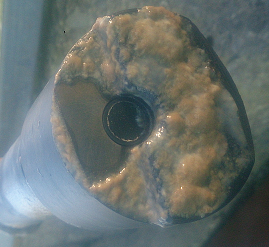 Whatever the process being monitored is, there is often something in the sample water capable of fouling a sensor, and therefore causing erroneous results. The obvious solution to this problem is to clean the sensor, but how regular should inspection and cleaning programs be for each piece of instrumentation? Too regular and the inspection and cleaning regime is time consuming and unnecessarily costly. Not often enough and the instrumentation will give false results and probably fail prematurely.
Whatever the process being monitored is, there is often something in the sample water capable of fouling a sensor, and therefore causing erroneous results. The obvious solution to this problem is to clean the sensor, but how regular should inspection and cleaning programs be for each piece of instrumentation? Too regular and the inspection and cleaning regime is time consuming and unnecessarily costly. Not often enough and the instrumentation will give false results and probably fail prematurely.
Solution: Pi’s Autoclean & Autoflush Systems
Simple, reliable and easy to maintain, Process Instruments’ Autoclean/Autoflush systems are an alternative to mechanical cleaning mechanisms which can clog and break. By regularly spraying the sensor/probe with clean water or air, the sensor remains clean and free from fouling for extended periods of time. The sensor cleaning cycle is activated by Pi’s controller for a user selectable length of time and frequency so that no matter how dirty the application, the probe remains clean. With no moving parts in the sensor body or in the cleaning attachment there is nothing to replace or check other than a simple valve positioned in an easy to reach location.
Pi’s Autoclean and Autoflush systems can give trouble free and fouling free functioning of sensors for weeks, if not months, at a time.
Autoclean
This option can be added to our pH, ORP, Turbidity, Suspended Solids and Dissolved Oxygen (DO) sensors. Consisting of an end cap to direct the flow of clean water (or air for a DO sensor) across the face of the sensor blasting any dirt away. The cleaning is controlled by a single valve positioned in an easily accessible location.
Autoverify
If using air to clean a DO sensor the system can also automatically verify that the sensor is still responding correctly, removing any need to remove the sensor from the sample for months at a time.
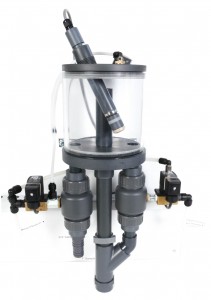
Autoflush
For sensors that require flow cell mounting like Chlorine, Ozone and Chlorine Dioxide, an Autoflush system has inbuilt valves which automatically start/stop the sample flow and control the flow of clean water past the probe. The user can set the flushing interval and duration to keep the flow cell and sensor clear from fouling. For particularly dirty or stubborn contaminants, warm water can be used as the flush water to aid cleaning.
With the above options, whatever the application or parameter being measured, Process Instruments will be able to provide a monitoring system that will not only be accurate, precise and long lasting but that will also remain free from fouling and save the operator both time and money.



































